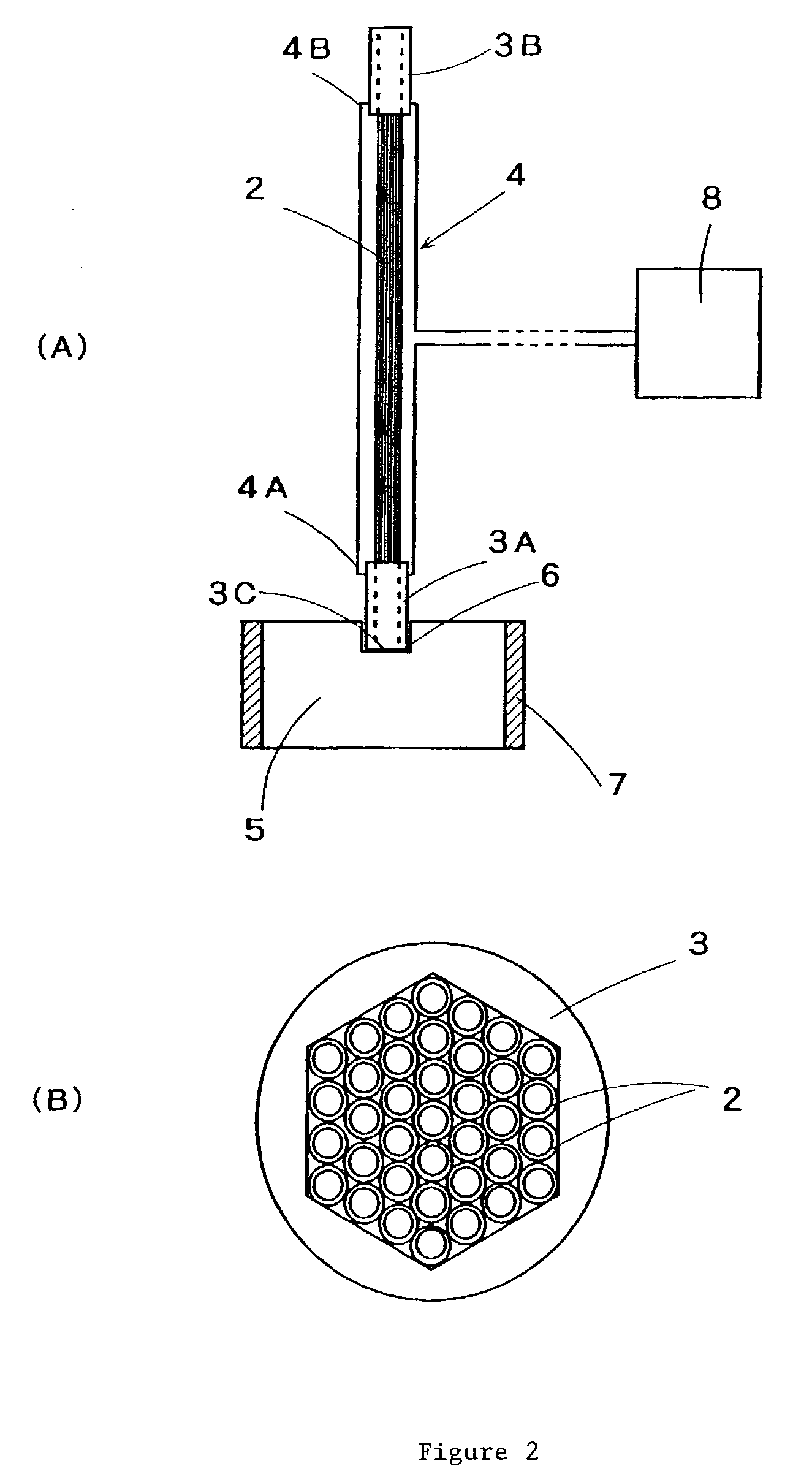Separation membrane module with hollow fiber and a method of making the same
- Summary
- Abstract
- Description
- Claims
- Application Information
AI Technical Summary
Benefits of technology
Problems solved by technology
Method used
Image
Examples
example 1
[0068]Both ends of 37 hollow fiber of amorphous fluororesin copolymer (DuPont, Teflon AF1600) with a diameter of 0.6 mm, inner diameter of 0.45 mm, thickness of 0.075 mm, and length of 100 mm were inserted into a polytetrafluoroethylene sheath with a regular hexagonal opening. The sheath was kept for 15 minutes inside a mold that had been heated to 240° C., with the spaces inside the sheath being joined to and decompressed with a polytetrafluoroethylene tube for decompression. The surfaces of the hollow fibers inside the sheath were integrally fused, and the sheath was then removed from the mold and cooled. After the yarns at one end were fused and integrated, the yarns at the other end were similarly fused and integrated.
[0069]Next, two cap screws made of polytetrafluoroethylene were driven into both ends of the integrally fused hollow fibers, and a regular hexagonal opening capable of accommodating the external shape of integrally fused hollow fibers was formed on the inside of a ...
PUM
| Property | Measurement | Unit |
|---|---|---|
| Temperature | aaaaa | aaaaa |
Abstract
Description
Claims
Application Information
 Login to View More
Login to View More - R&D
- Intellectual Property
- Life Sciences
- Materials
- Tech Scout
- Unparalleled Data Quality
- Higher Quality Content
- 60% Fewer Hallucinations
Browse by: Latest US Patents, China's latest patents, Technical Efficacy Thesaurus, Application Domain, Technology Topic, Popular Technical Reports.
© 2025 PatSnap. All rights reserved.Legal|Privacy policy|Modern Slavery Act Transparency Statement|Sitemap|About US| Contact US: help@patsnap.com



